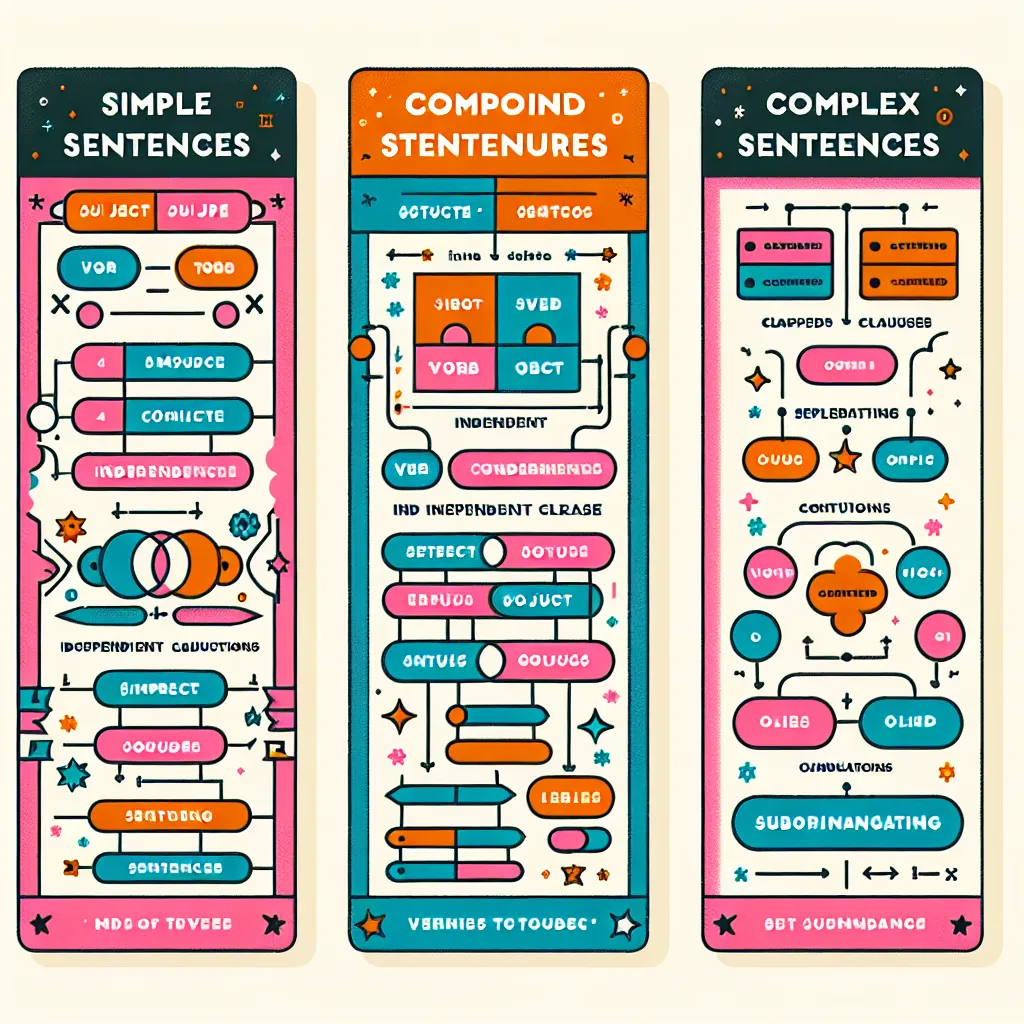Are you looking to enhance your English writing skills? Mastering sentence structure is crucial for effective communication in English. Whether you’re a student, professional, or language enthusiast, these tips will help you craft clearer, more engaging sentences. Let’s dive into ten essential strategies for improving your English sentence structure.
1. Understand the Basic Sentence Components
To build better sentences, you need to know the building blocks. Every English sentence must have a subject and a verb. The subject is the person or thing performing the action, while the verb describes the action.
Example:
- Simple: The cat (subject) sleeps (verb).
- Complex: The energetic kitten (subject) playfully chased (verb) the red laser dot across the room.
Understanding these components helps you create grammatically correct sentences and avoid common errors like sentence fragments.
 English Sentence Structure
English Sentence Structure
2. Vary Your Sentence Length
Mixing short and long sentences creates rhythm in your writing and keeps readers engaged. Short sentences can add impact, while longer ones can explain complex ideas.
Example:
- Short: She paused. The room was silent.
- Long: As she entered the dimly lit auditorium, the hushed whispers of the audience gradually faded into an anticipatory silence, heightening the tension before her crucial presentation.
3. Use Active Voice for Clarity
Active voice makes your writing more direct and engaging. In active voice, the subject performs the action. Passive voice, while sometimes necessary, can make sentences wordy and less clear.
Active vs. Passive:
- Active: The chef prepared the meal.
- Passive: The meal was prepared by the chef.
Active voice is generally more concise and easier to understand, especially for non-native English speakers.
4. Employ Transitional Phrases
Transitional phrases help connect ideas and improve the flow of your writing. They guide readers through your thoughts, making your text more coherent.
Common transitional phrases:
- To add information: “Furthermore,” “In addition,” “Moreover”
- To contrast: “However,” “On the other hand,” “Nevertheless”
- To conclude: “In conclusion,” “To sum up,” “Finally”
Learn more about mastering English grammar in conversation
5. Practice Parallel Structure
Parallel structure involves using the same grammatical form for similar ideas within a sentence. This technique enhances clarity and creates a pleasing rhythm.
Example:
- Not parallel: She likes swimming, to hike, and reading books.
- Parallel: She likes swimming, hiking, and reading books.
6. Avoid Run-On Sentences
Run-on sentences occur when two or more independent clauses are incorrectly joined. They can confuse readers and make your writing less effective.
How to fix run-on sentences:
- Use a period to separate the clauses into distinct sentences.
- Use a semicolon between closely related independent clauses.
- Use a comma and a coordinating conjunction (and, but, or, nor, for, so, yet).
Example:
- Run-on: I love cooking my family enjoys eating my meals.
- Corrected: I love cooking. My family enjoys eating my meals.
- Alternative: I love cooking; my family enjoys eating my meals.
 English Sentence Structure Tips
English Sentence Structure Tips
7. Use Subordinate Clauses for Complexity
Subordinate clauses add depth to your sentences by providing additional information. They can’t stand alone as complete sentences but enhance the main clause.
Example:
- Simple: We went to the park. It was a sunny day.
- With subordinate clause: We went to the park, which was bustling with families, on a sunny day.
Discover tips for improving your grammar accuracy
8. Be Mindful of Subject-Verb Agreement
Ensure that the subject and verb in your sentences agree in number. Singular subjects take singular verbs, while plural subjects take plural verbs.
Examples:
- Correct: The team is playing well. (singular subject)
- Correct: The players are practicing hard. (plural subject)
9. Use Punctuation Effectively
Proper punctuation is crucial for clear communication. It helps readers understand the intended meaning and pacing of your sentences.
Key punctuation marks:
- Commas: Use to separate items in a list or to join independent clauses with a conjunction.
- Semicolons: Use to join closely related independent clauses without a conjunction.
- Colons: Use to introduce lists or explanations.
10. Read and Analyze Well-Written Texts
One of the best ways to improve your sentence structure is to read extensively. Pay attention to how skilled writers construct their sentences.
Reading strategies:
- Analyze sentence types and structures in professional writing.
- Take note of effective transitions between ideas.
- Observe how authors vary sentence length for impact.
Explore tips for learning English by writing short stories
Conclusion
Improving your English sentence structure takes time and practice, but these tips provide a solid foundation. Remember to start with basic structures and gradually incorporate more complex elements. As you apply these techniques, your writing will become clearer, more engaging, and more effective.
Keep practicing, and don’t be afraid to experiment with different sentence structures. The more you write and revise, the more natural these techniques will become. With dedication and consistent effort, you’ll see significant improvements in your English writing skills.




